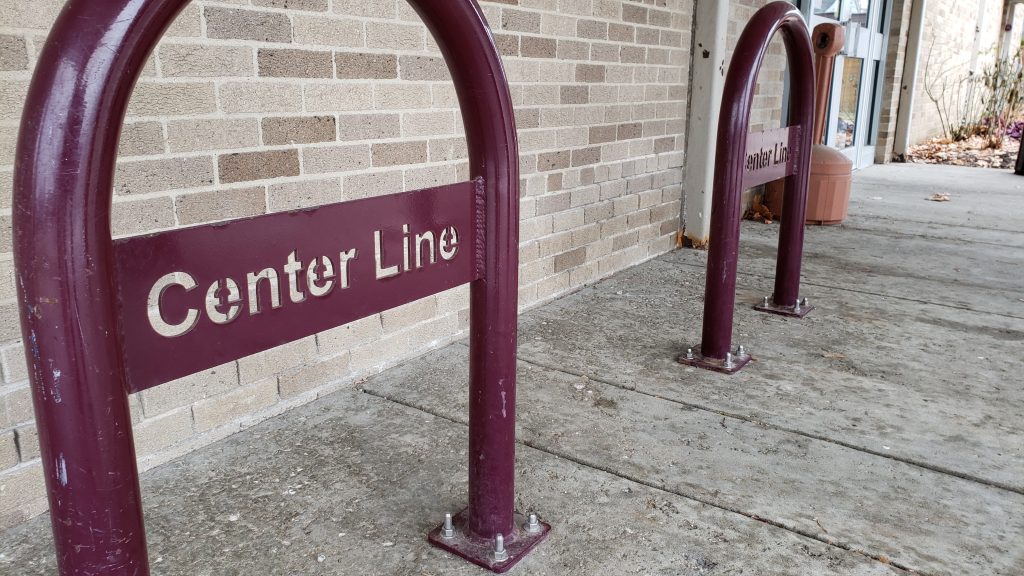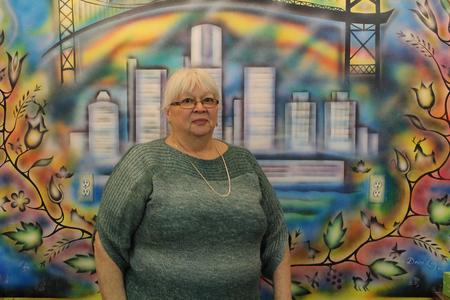How Did Center Line Get Its Name? A Fractious Indigenous History, Some Say
One possible origin of the name “Center Line” is rooted in Native American history, tracing back to early conflicts between Native people and settlers.

The City of Center Line has roots in the Native American community. Those ties span from present day, back to when the city was little more than an area of dense trees.
“You had the Huron but then the Iroquois came in a butchered the Huron,” reflects local historian Wesley Arnold. “Now you hear a lot of talk about the Chippewas.”
Crossing the Lines
101.9 WDET’s Crossing the Lines series explores what unites the Metro Detroit region and what divides it.
Why Center Line? The city is a community with a deep history as well as a significant shift in diversity over the past 20 years. See more coverage
And there is a reason why we’re using the word “Indians” instead of Native Americans… but we’ll explain that later.
“I’m a member of the Sault Ste. Marie tribe of Chippewa Indians,” says Center Line resident Sue Franklin. She says the Chippewa and other tribes of the Anishinaabe nation were once spread throughout the state.
“And it was really the Potawatomi people who lived in this area,” Franklin explains.” They were all over the southern part of Michigan.”
“They didn’t understand each other, so they just assumed these were the killing [type of] Indians, and they weren’t.” – Wesley Arnold, historian
A History of Conflict, Massacre

As European settlers began entering the area, things started to get complicated. Settlers told a lot of lies. Wesley Arnold says the British and French armed some of the tribes with guns.
“And the Indians were killing the American settlers,” says Arnold.
However not all of the native people were violent. For example, a group of Christian practicing Indians at a “Moravian missionary” in southeastern Ohio.
“Some Americans found these Moravian Indians harvesting their corn,” says Arnold. “They weren’t attacking anybody. They didn’t have any guns. They had knives to cut the corn. They were gathering the corn they had planted.”
Unfortunately, the settlers were used to being attacked and did not know these American Indians were peaceful. And so the settlers killed 96 of them in 1782, in what is known as the Moravian massacre.
“We had a language malfunction,” Arnold explains. “We couldn’t speak to each other, they didn’t understand each other, so they just assumed these were the killing [type of] Indians, and they weren’t.”
“If you ask me what I wanna be called, I’m gonna tell you Anishinaabe.” – Sue Franklin, South Eastern Michigan Indians Inc
Moravian Trail
After the massacre some of the surviving natives relocated to Michigan, forming a new village near present day Mount Clements.
Those American Indians also forged the Moravian Trail, connecting their new home to the City of Detroit. Over time, that trail would become one of three major wagon-ways running north from Detroit.
Arnold says the name “Center Line” is derived from an English translation of an old French map showing the path. He says the trail once ran through the city where Sherwood Avenue is today.

“Most of the treaties that were written between the federal government and Indian tribes across the United States refer to us as North American Indians,” says Sue Franklin, executive director of South Eastern Michigan Indians Inc.
Franklin says that means her legal and political identity is as an American Indian. However, she says not everyone agrees with that term. Some prefer to be called Native Americans.
“If you ask me what I wanna be called, I’m gonna tell you Anishinaabe. That’s the nation that my tribal nation falls under. And so we use it interchangeably. And there’s some people like i said that don’t like it. I don’t mind it.”
“This is a wonderful city.” – Sue Franklin, South Eastern Michigan Indians Inc
Today’s Natives
South Eastern Michigan Indians is a non-profit center based in Center Line. The group provides a variety of services to what Franklin says is a sizeable American Indian community.
“If you take all of the native people that are here in southeastern Michigan,” says Franklin, “roughly a seven county area, it is more highly populated with Native Americans than any one of the tribes.”
Franklin says that adds up to about 42,000 people in the region. She says her non-profit also works with tribes at the state level, on causes such as “commercial tobacco prevention.”
“A lot of people think tobacco is just tobacco,” Franklin explains. “We use traditional tobacco for spiritual purposes, which is acceptable to us. The commercial tobacco is what the tobacco industry pushes that’s so addictive and causes so many health consequences.”
According to her people’s creation story, Franklin says tobacco was the first plant put on Earth by the Creator, giving the substance its powerful effects. However, Franklin says what they call “ceremonial tobacco” is much different than the form used in cigarettes.
“We’ve worked all over the state on that with smoke-free housing initiatives with the tribes, as well as some of the stuff that’s on vaping now.”
While the non-profit works with Native Americans from all around the regions, Franklin says South Eastern Michigan Indians Inc. has called Center Line home since 1990.
“This is a wonderful city,” she says. “And my husband and I also bought a home here, so this is home.”
